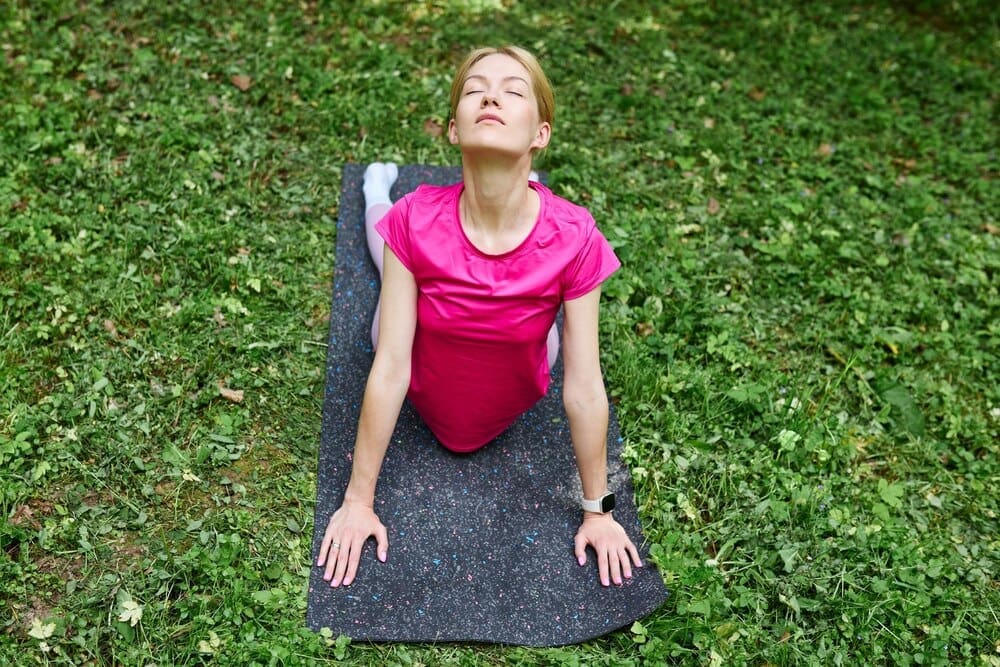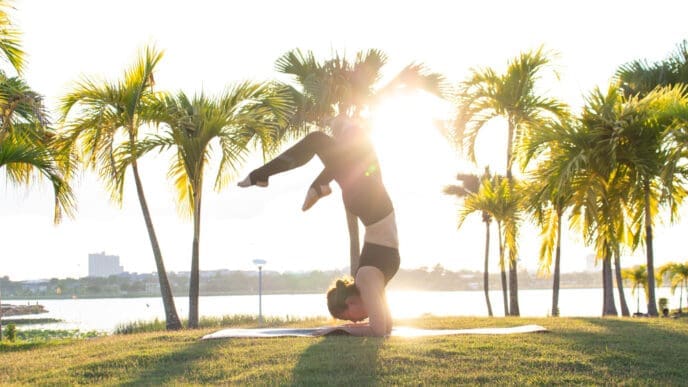In a world of constant digital notifications and relentless pressure, the simple act of breathing offers a powerful, science-backed antidote to modern stress. For anyone feeling overwhelmed by anxiety, racing thoughts, or the demands of daily life, specific breathing techniques provide an immediate, accessible tool to calm the nervous system and anchor the mind in the present moment. These practices, which can be done anywhere and by anyone, work by consciously shifting the body’s physiological state from “fight or flight” to “rest and digest,” offering a free and effective way to reclaim a sense of control and inner peace.
Why Your Breath is a Superpower for Your Brain
To understand why a simple inhale and exhale can be so transformative, we need to look at our body’s internal wiring. Our Autonomic Nervous System (ANS) controls our involuntary bodily functions, like heartbeat and digestion, and it has two main branches that act like a gas pedal and a brake.
The first branch is the Sympathetic Nervous System (SNS), our “fight-or-flight” response. When we perceive a threat—whether it’s a looming work deadline or a sudden loud noise—the SNS kicks in. Our heart rate increases, our muscles tense, and our breathing becomes shallow and rapid, preparing us for action.
The second branch is the Parasympathetic Nervous System (PNS), our “rest-and-digest” response. This system promotes calm, conserves energy, and slows the heart rate. The two systems cannot be dominant at the same time; when one is active, the other is suppressed.
Crucially, breathing is the one function of the ANS that we can consciously control. When we are stressed, our breathing automatically becomes fast and shallow. By intentionally slowing down and deepening our breath, we send a direct signal to our brain that the danger has passed. This deliberate action stimulates the vagus nerve, a critical nerve that runs from the brain to the abdomen, activating the PNS and effectively applying the body’s physiological brakes.
The Foundation: Bringing Awareness to Your Breath
Before diving into specific techniques, the first and most fundamental step is simply to notice your breath. This practice, at the heart of mindfulness, involves paying attention to the physical sensation of air entering and leaving your body without trying to change it in any way.
Take a moment to feel the air move through your nostrils, the gentle rise and fall of your chest and abdomen. This simple act of observation serves as an anchor. When your mind is spiraling with worries about the future or regrets about the past, focusing on the neutral, physical sensation of breathing pulls your awareness back to the here and now. It interrupts the cycle of rumination and gives your mind a single, calming point of focus.
Three Simple Breathing Techniques to Try Today
Once you are comfortable simply observing your breath, you can begin to use structured techniques to actively influence your physiological and mental state. These three methods are easy to learn, clinically supported, and can be adapted to various situations.
Technique 1: Diaphragmatic or “Belly” Breathing
This is the most natural and efficient way to breathe, yet many adults have fallen into the habit of shallow “chest breathing,” especially when stressed. Diaphragmatic breathing engages the diaphragm, a large muscle at the base of the lungs, to ensure a full oxygen exchange, which naturally slows the heartbeat and can lower or stabilize blood pressure.
How to do it:
- Find a comfortable position, either sitting in a chair with your back straight or lying on your back with your knees bent.
- Place one hand on your upper chest and the other hand on your belly, just below your rib cage.
- Breathe in slowly through your nose for about two seconds. As you inhale, focus on allowing your belly to push out. The hand on your stomach should rise, while the hand on your chest remains relatively still.
- Exhale slowly through your mouth or nose, feeling the hand on your belly gently lower as you release the air.
When to use it: Practice this for 5-10 minutes a day to retrain your body’s default breathing pattern. It is an excellent foundational practice and can be used to manage mild, everyday stress.
Technique 2: Box Breathing
Also known as four-square breathing, this technique is renowned for its use by high-stress professionals like Navy SEALs, police officers, and emergency room nurses. Its simple, rhythmic structure is incredibly effective at calming the nervous system and focusing the mind when under pressure. The name comes from visualizing the four equal sides of a box as you move through the steps.
How to do it:
- Sit upright and slowly exhale all the air from your lungs.
- Inhale slowly and deeply through your nose to a mental count of four.
- Hold your breath for a count of four. Try not to clamp down; just gently pause.
- Exhale slowly through your mouth or nose for a count of four.
- Hold your breath again at the end of the exhale for a count of four.
- This completes one cycle. Repeat for at least 4-5 cycles or until you feel a sense of calm.
When to use it: This technique is perfect for moments of acute stress or anxiety, such as before a presentation, during a difficult conversation, or when you feel overwhelmed.
Technique 3: The 4-7-8 Relaxing Breath
Popularized by Dr. Andrew Weil, an integrative medicine specialist, the 4-7-8 breath is described as a “natural tranquilizer for the nervous system.” The key to this practice is the extended exhale, which powerfully activates the parasympathetic “rest-and-digest” response. The specific counts help to fully expel carbon dioxide and saturate the blood with oxygen.
How to do it:
- Sit with your back straight. Place the tip of your tongue against the ridge of tissue just behind your upper front teeth and keep it there throughout the entire exercise.
- Exhale completely through your mouth, making a gentle “whoosh” sound.
- Close your mouth and inhale quietly through your nose to a mental count of four.
- Hold your breath for a count of seven.
- Exhale completely through your mouth, making the “whoosh” sound again, for a count of eight.
- This is one breath. Inhale again and repeat the cycle three more times for a total of four breaths.
When to use it: This is an especially potent technique for inducing relaxation. Use it to help you fall asleep, to calm down after feeling angry or agitated, or to manage intense cravings.
Making it a Habit: Weaving Breathing into Your Routine
While these techniques are incredibly effective in moments of crisis, their true power is unlocked when they become a regular practice. Just like physical exercise builds muscle, consistent breathwork builds your “attentional muscle” and resilience to stress. The goal is not to wait until you are drowning to learn how to swim.
Try “habit stacking” by linking a few minutes of breathing to something you already do every day. For example, practice three rounds of box breathing right after you brush your teeth, or do a minute of belly breathing before you start your car. You can also set alarms on your phone or use mindfulness apps as a reminder to pause and breathe throughout the day.
What If It Feels Uncomfortable or Doesn’t Work Immediately?
It is important to approach breathwork with patience and self-compassion. For some individuals, particularly those with a history of trauma or severe anxiety, focusing on internal bodily sensations can initially feel unsettling or even increase anxiety. This is a known phenomenon, and it does not mean you are doing it wrong.
If you feel discomfort, start smaller. Try just one or two conscious breaths. If focusing on the breath itself is too much, shift your anchor of attention to something external, like the feeling of your feet planted firmly on the floor or the steady hum of a fan. The goal is to find a safe anchor in the present moment, and that anchor can be whatever works for you.
Remember, these techniques are powerful tools for self-regulation, but they are not a substitute for professional mental health care. If you are struggling with persistent anxiety, depression, or the effects of trauma, please consider reaching out to a qualified therapist or counselor.
Ultimately, your breath is the most portable and reliable wellness tool you own. It is always with you, waiting to be used. By learning to consciously engage with this fundamental life process, you can effectively manage your body’s stress response, quiet the noise of a racing mind, and anchor yourself firmly in the stability and peace of the present moment.












